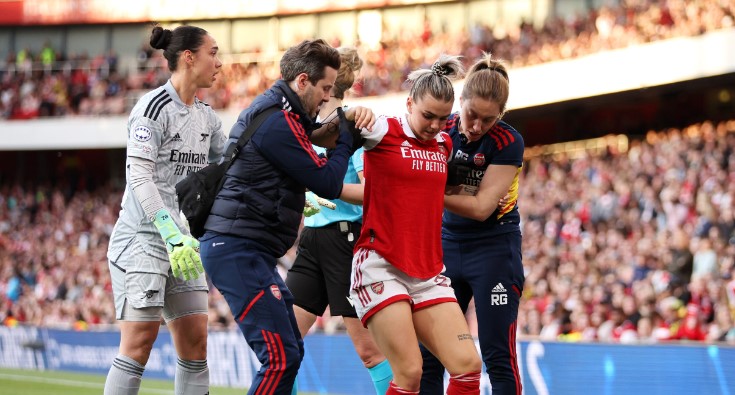Closing the Gap: The Need for Better Research on Women’s Sports Injuries
 Women in sports are breaking barriers, setting records, and inspiring future generations, but they also face a troubling reality: a significantly higher risk of injury compared to men.
Women in sports are breaking barriers, setting records, and inspiring future generations, but they also face a troubling reality: a significantly higher risk of injury compared to men.
 This disparity stems from the fact that research and treatment protocols for sports injuries are often tailored toward men, leaving female athletes at a disadvantage when it comes to injury prevention and recovery.
This disparity stems from the fact that research and treatment protocols for sports injuries are often tailored toward men, leaving female athletes at a disadvantage when it comes to injury prevention and recovery.
According to The Gist, less than 35 percent of exercise medicine studies include women, and only 3 to 6 percent of participants in sports-performance research are female.
Consequently, many protocols are based on male physiology, forcing medical professionals to apply them to women, despite the critical physiological differences.
For example, women are 50 percent more likely to suffer concussions in comparable sports than men, yet most head trauma protocols focus on the male body.
Similarly, female runners are twice as likely to experience stress fractures, but treatment plans remain based on male skeletal structures.
Gender bias has been a long-standing issue, leading to frequent misdiagnosis and underdiagnosis in over 700 conditions, according to a U.S. study by the Esteve Foundation.
Even in heart attacks, women's symptoms are based on men's, such as left arm pain or chest pressure.
One of the most common reasons given for the exclusion of women in sports research is the perceived complexity of menstrual cycles. Juliana Antero, a sports researcher, believes this reasoning is precisely why more research is needed.
"If we want to optimize women’s sporting results, we need to know more about the impact of female physiology on their performance."
Despite these challenges, women continue to excel in sports. However, experts like orthopaedic surgeon Nev Davies emphasize the need for change. Davies stressed that more research focused on female athletes is essential for their safety and success in the sports world.
"For a long time, women have been treated like little men. There is a real lack of research. The entire high-performance environment is built around men - designed by men for men"
![HR Logo [Recovered]_Full Color Vertical-1](https://blog.healthyroster.com/hs-fs/hubfs/HR%20Logo%20%5BRecovered%5D_Full%20Color%20Vertical-1.png?width=199&height=178&name=HR%20Logo%20%5BRecovered%5D_Full%20Color%20Vertical-1.png)
 By
By


